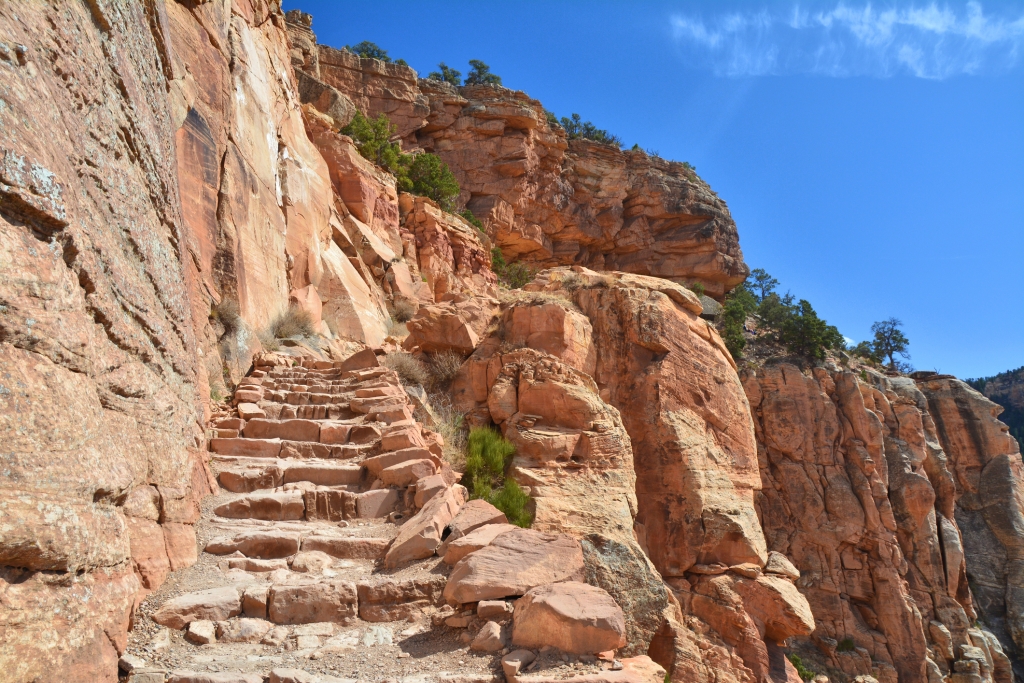These scenic hikes deepen your appreciation of this Wonder of the Natural World
The first view most visitors take in of Grand Canyon is along the South Rim, all the while viewing the far distant North Rim a dozen miles away. But once they spot the Bright Angel Trail and the hikers on it descending below the rim, they see Grand Canyon in a new light. And when a guest walks below ground level, they are instantly rewarded with a unique perspective of the canyon because, with each step, they are traveling millions of years into the past.
Hiking is one of the most popular activities at Grand Canyon, for good reason. When you hike into the canyon you enter an entirely new world. Trails alternate between sweeping curves, tight switchbacks, level paths, and gradual slopes. You witness rock formations unseen from above, walk alongside canyon walls, and find distant views of the canyon floor coming into sharper focus.
Here are the best trails for entry-level hikers to enjoy this marvel of nature on foot.
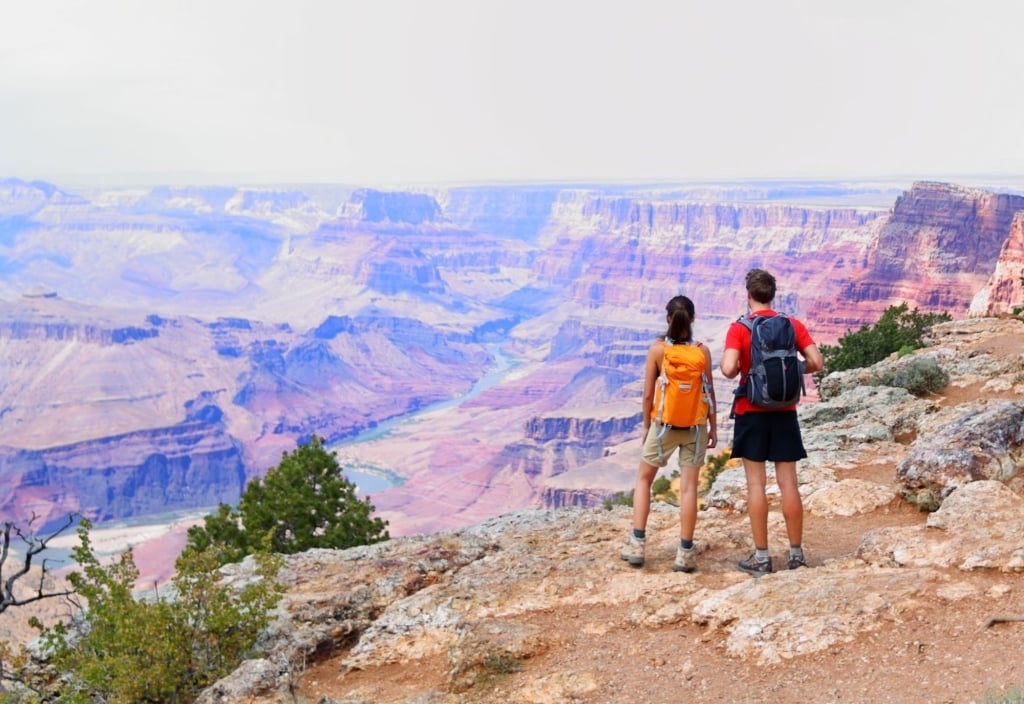
The Rim Trail
To be sure, not every hike has to take you into the canyon. The easiest hike of all is along the 13-mile-long Rim Trail, which offers a great introduction to the canyon. Many of the overlooks offer spectacular vistas to the other side of the canyon and as far as 40 miles east and west along the canyon. Stretching from Hermits Rest in the west and passing through the Historic Village before ending near the Grand Canyon Visitor Center, the mostly paved hiking/biking trail has only a few dips, is handicapped-accessible, and offers the convenience of services and supplies in the village. Plus, shuttle stops at various points along the route make it easy to hike between viewpoints and catch the shuttle at designated stops.
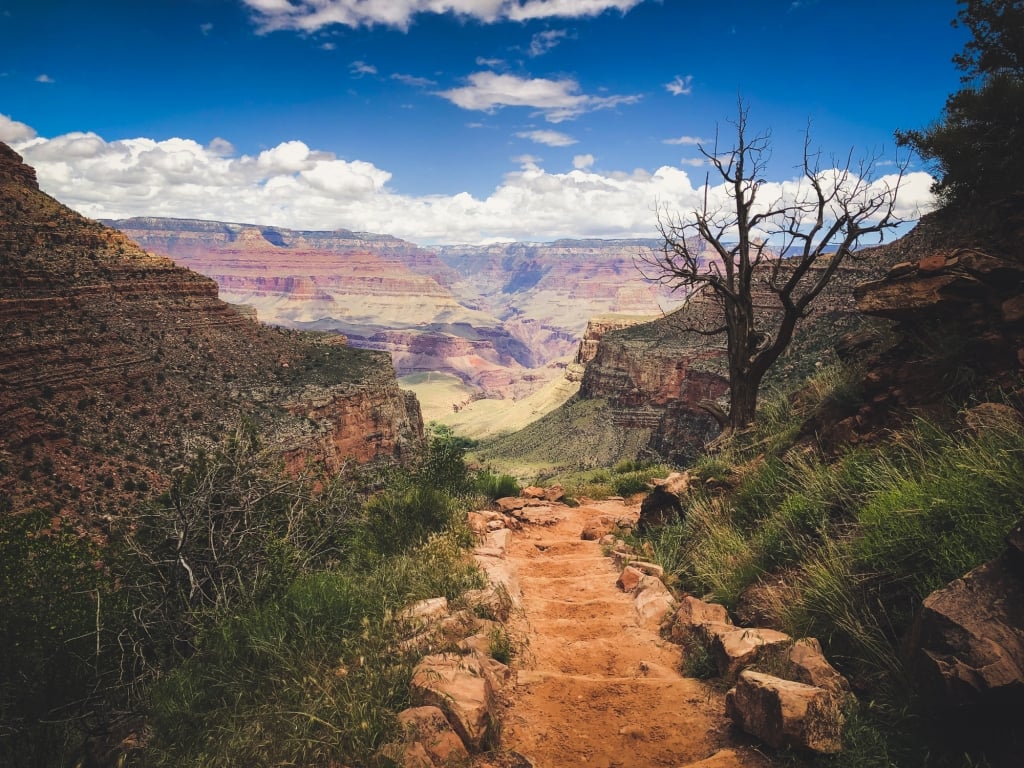
Bright Angel Trail
Branching off the Rim Trail at the west end of the village, the Bright Angel Trail is the park’s most visited. Although it descends all the way to Bright Angel Campground at the floor of the canyon (and continues to the North Rim), few hikers make it that far, or would even want to since it takes considerable stamina even to attempt the 19-mile round-trip trek.
If you question your level of fitness or endurance, take a test hike. After walking a few hundred yards into the canyon, turn around and walk back up. If you’re fatigued, the reason may be the 7,000-foot altitude. Allow some time — perhaps even a few days — to adjust to the park’s thinner air.
When you’re ready, near the beginning of the steep, dirt trail is one of the most photographed features of the park; a tunnel that can only be captured by Bright Angel Trail hikers. The towering Upper Tunnel lures you to it, and then through it, perfectly framing anyone standing beneath the arch.
Past this point the trail clings to the canyon walls, wrapping around the wide arc of just one of the canyon’s hundreds of such stone “inlets.” On this trail, the 1.5 Mile Resthouse is a natural destination. According to a park service chart, it sits below the “Have Fun Zone” and just atop the depths of the “Be Careful Zone” (which itself sits atop the “Seek Advice Zone”). That distinction alone — that it’s a sensible stopping point — makes this a natural destination for a novice hiker in good condition.
So when you arrive at the 1.5 Mile Resthouse, take a break. Pause awhile and soak in views of the canyon you could only imagine a few hours earlier. (Water is available seasonally as are restroom facilities.)
South Kaibab Trail
A few miles east of Bright Angel Trail is the South Kaibab Trail. Some consider a walk to this trail’s Cedar Ridge (roughly the same distance as the hike to Bright Angel’s 1.5 Mile Resthouse) one of the best short hikes in America. Extend it by 21 miles and it becomes one of the best long hikes in America. It turns out that this trail, like Bright Angel, exits at the far distant North Rim where hikers are entering at the North Kaibab Trail.
Again, while you could try to go the distance, the 1.5-mile hike (three miles round trip) is enough to take you past one of the park’s most popular points and to a dramatic overlook that rewards your efforts to reach it. Here’s how it happens.
From the beginning, you’ll sense this will be an epic experience as the notch in the canyon casts a dramatic light on the walls, brilliantly illuminating one side while keeping the other in soft shade. The trail twists and slants and slopes before you arrive at Ooh-Aah Point, a name that demonstrates truth in advertising. Join other hikers and take a break, have a drink of water, rest your feet, and simply bask in the view from a few hundred yards below the rim.
The trail continues for another mile until it arrives at a plateau more populated than Ooh-Aah Point. It takes roughly an hour to reach Cedar Ridge and, if this is your first visit to Grand Canyon, give this vista overlook equal time. Take an hour here. Crack open a book, sketch the canyon, stretch out on a rock (there are hundreds, take your pick), and simply allow yourself the pleasure of savoring the sensation of being inside Grand Canyon where the views overhead are nearly as impressive as the views below. (There is no water on the Kaibab Trail, but there are restroom facilities at Cedar Ridge.)
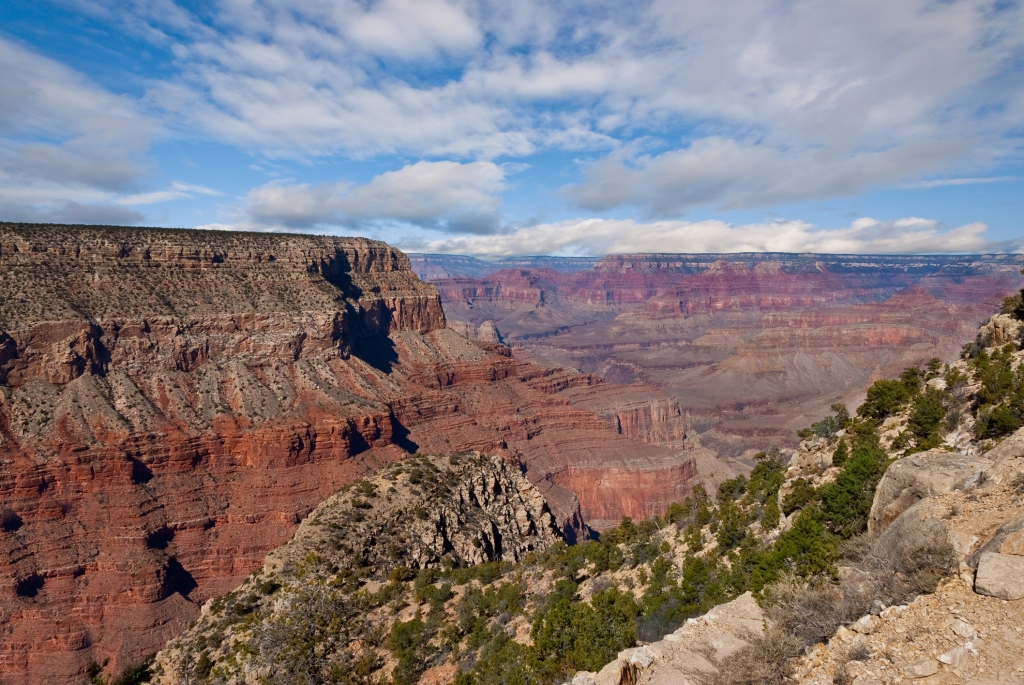
For Experienced Hikers
In addition to the three trails mentioned above, Grand Canyon offers others that are favored by experienced desert hikers, including Hermit Trail, an unmaintained steep trail that is not recommended for the average visitor. It leads on a five-mile round trip hike to Santa Maria Spring, and a seven-mile round-trip to Dripping Springs. Likewise, Grandview Trail is another very steep, unmaintained trail that requires superior hiking skills. It leads to Coconino Saddle (2.2 miles round trip) and Horseshoe Mesa (6.4 miles round trip).
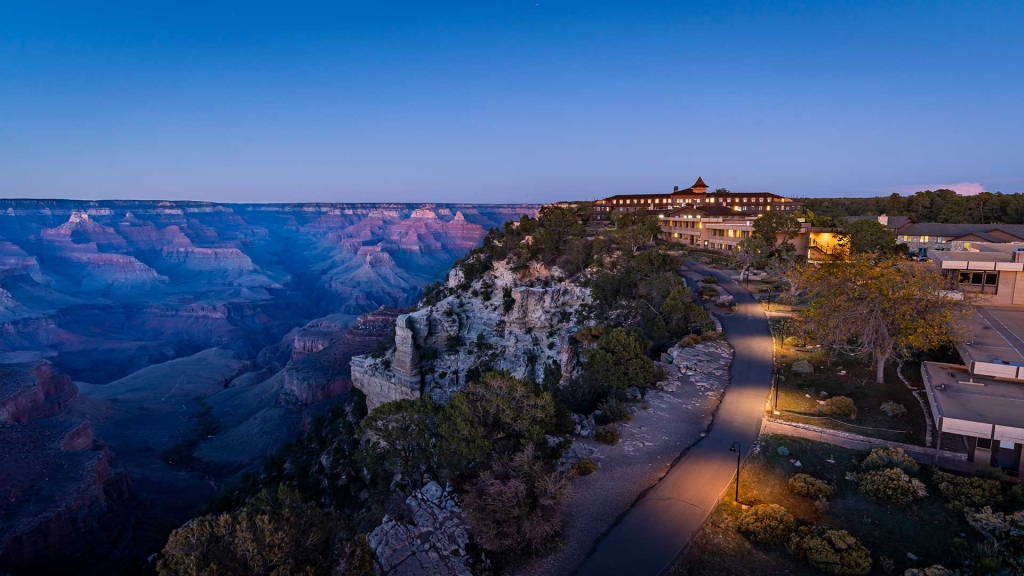
Know Before You Go
It’s important to prepare properly for hiking in Grand Canyon. Of the hundreds of canyon rescues that take place each year, the vast majority are in response to visitors who’ve entered the canyon lacking basic supplies. Consult the Grand Canyon National Park Service website for additional information and remember to hike smart.
Be sure to bring:
- At least two liters of water and sport drinks
- Food such as protein bars and salty snacks
- Hiking poles or staff
- Appropriate well-fitting footwear (no high heels or flip flops)
- A hat and sunglasses
- Sunscreen and lipbalm
- A map or trail guide
- A flashlight or headlamp
- A whistle for emergencies
- Crampons (in winter)
Before you enter the canyon, the National Park Service recommends checking the weather forecast, leaving an itinerary with friends, and taking along a small first aid kit with ointments and bandages for blisters. Check also to see if the water is available on the Bright Angel Trail.
For more travel experiences available from the Xanterra Travel Collection® and its affiliated properties, visit xanterra.com/stories.



